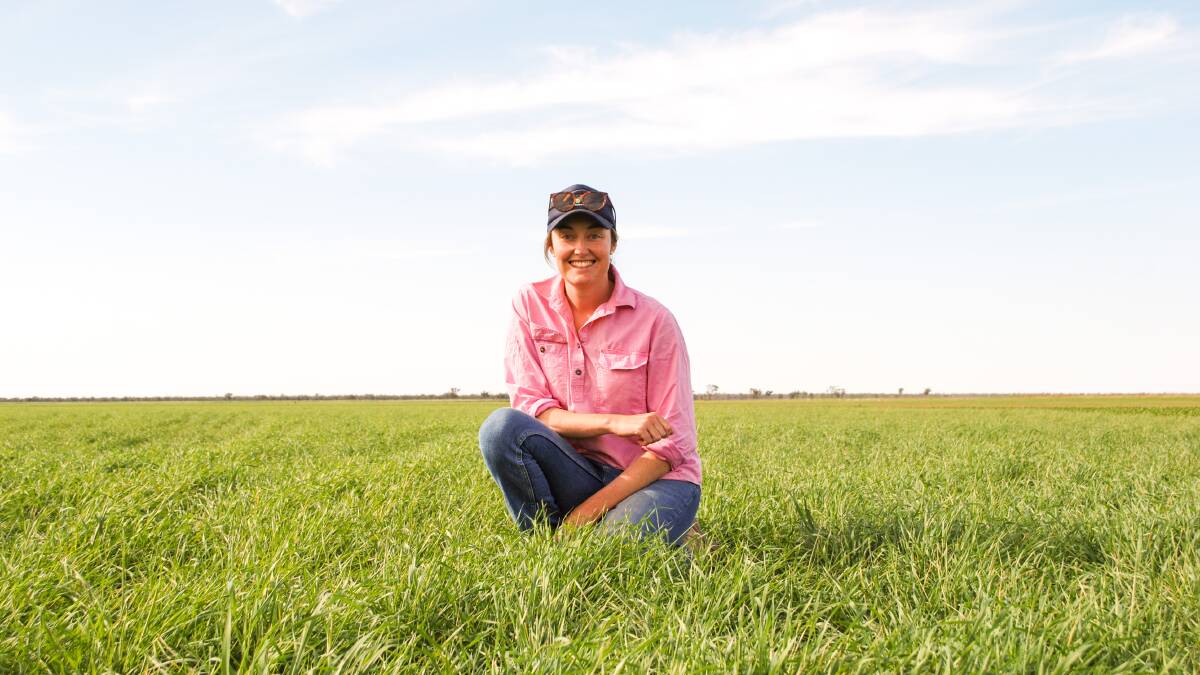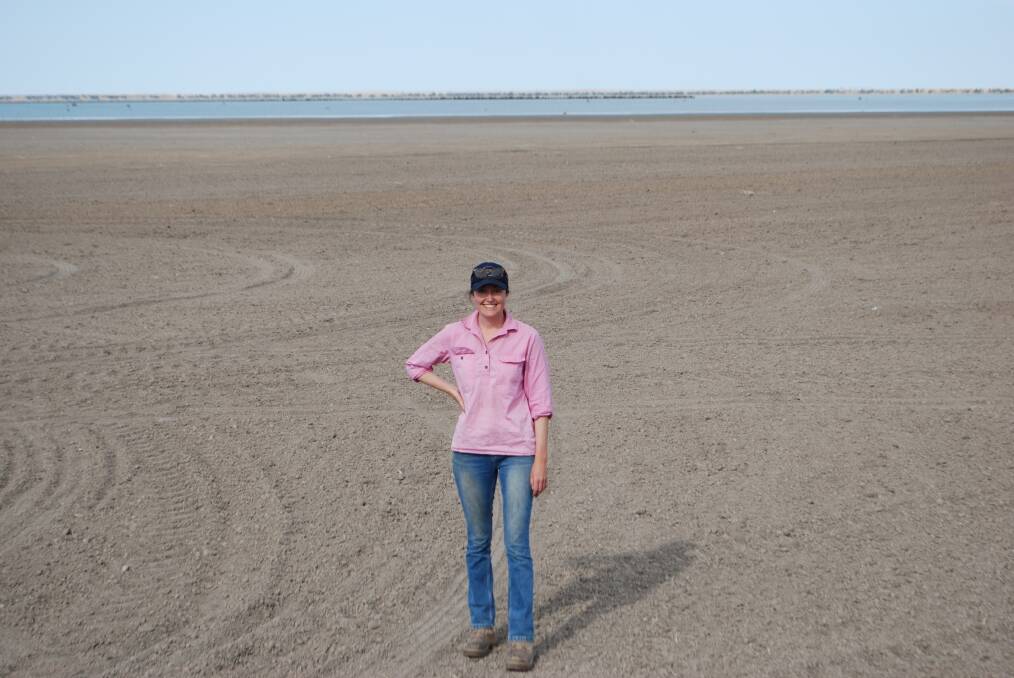
A Pooncarie family is living the adage of "make hay while the sun shines" by planting crops on a receding lake which only floods once every decade.
Subscribe now for unlimited access to all our agricultural news
across the nation
or signup to continue reading
The 24,000-hectare Polia Station is bordered to the front and back by the Darling River and the Great Darling Anabranch.
River country and two major lakes on the station means the Clothier family can lose as much as 40 per cent of the property during flooding.
But, the floods also fill Lake Mindona, which is usually dry and can reach about 9000ha at capacity.
Emily Clothier said the operation runs about 5000 White Dorper ewes, but this year the family had also planted about 800ha of crops on the lake bed as the water recedes.
"It doesn't happen very often - last time it happened was 10 years ago and the time before that it was 10 years as well," she said.
"We have to make our decisions quickly.
"You only get one chance - one crop and after that the ground starts cracking open.
"It's exciting, but I suppose you have to take the risk that if it rains up north again and we've got the whole crop in, we can't stop the water."
Ms Clothier said the station was certified organic through the National Association for Sustainable Agriculture Australia and the United State's National Organic Program.
As they were unable to use chemicals on the lake bed in case it went back into the river system, targeting the organic market made sense, she said.
They have planted oats for hay, spelt wheat, sorghum and safflower. Ms Clothier said they were also trialling plots of linseed for the first time.

Lakebed cropping presented unique challenges.
The way the water receded had made access hard and as a result the oats were sown a little late, she said.
The irregularity of the cropping enterprise also made it difficult to establish markets.
The last time they cropped the family had exported hay to North and South Korea and also sold grain to mills in Queensland, but this time the market was a lot quieter.
"Last time, the demand for organic grain was ridiculous, we couldn't grow enough," she said.
"All the contacts we had last time, they're not around or the people we spoke to aren't there anymore. You have to start from scratch every time.
"You've also got all your new varieties - over 10 years they've developed new stuff."
The reduced market was making it hard to plan for next year, she said, but cereals were an option as they could deliver it domestically to sites at Yelta or Carwarp in Victoria.
"I'd say we'll probably do a fair bit of hay just because it's easy to store," she said.
"We have the sheds here to store it, it's not like trying to store grain."
The region has an average annual rainfall of 265 millimetres but this season had been unusual, with about 100mm falling in June.
Ms Clothier said they would hire contractors during harvest and had already started to upgrade the tracks out to the lake.
She was still at school the last time the lake flooded, so it was exciting to be involved this time around.
Watching the lake fill after such a devastating drought in 2019 was also striking.
At the time, the drought seemed to last forever.
"I didn't think it would ever recover, actually," she said.
"It was horrible here... Mum and Dad said it was the worst they'd ever seen.
"We ended up completely destocking."


